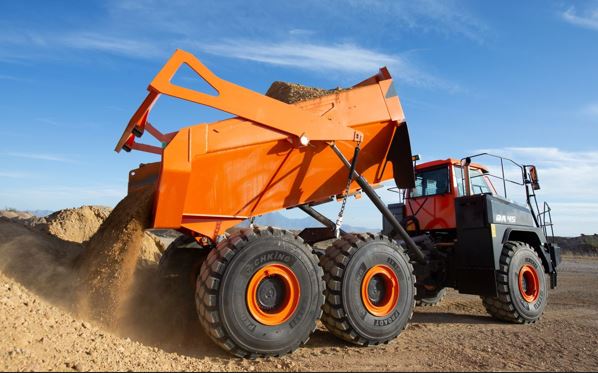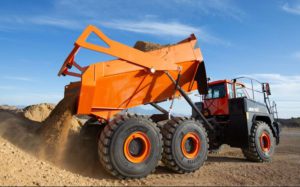
Heavy equipment is the backbone of construction, mining, and agricultural operations. From excavators and bulldozers to loaders and cranes, these powerful machines perform demanding tasks every day. Because they operate under intense pressure and harsh conditions, even minor issues can quickly escalate into costly breakdowns if not addressed promptly. To avoid expensive repairs, minimize downtime, and protect your staff, you must be able to spot problems early.
Unusual Noises During Operation
Heavy machinery is designed to operate smoothly with minimal unusual sounds. When you start hearing grinding, knocking, squealing, or clanking noises, it usually means that internal components are under stress or beginning to fail. For example, a grinding sound might indicate worn-out bearings or gears, while a high-pitched squeal could suggest a problem with the hydraulic system. Ignoring these sounds may lead to complete mechanical failure or costly replacements. Regular listening checks during operation can help identify these issues early and keep your equipment running efficiently.
Excessive Vibrations Or Shaking
Slight vibration is normal for most heavy machinery, but excessive shaking or unusual movement often signals trouble. Problems such as misaligned parts, worn-out engine mounts, loose bolts, or failing hydraulic components can cause vibrations. If not corrected promptly, these vibrations can affect machine stability and operator comfort and even compromise work precision. Inspecting the source of vibration immediately helps avoid further mechanical damage and extends the lifespan of the equipment.
Fluid Leaks
Leaks are one of the most visible signs that a heavy equipment repair is needed. Hydraulic fluid, engine oil, transmission fluid, or coolant should never be leaking from your machine. Even small drips can turn into major issues if left unattended. Leaks may indicate damaged seals, cracked hoses, or loose fittings, which can cause severe pressure loss and lead to system failure. Regularly check under your machines for wet spots, puddles, or stains, and address leaks before they create safety hazards or operational interruptions.
Overheating
Overheating is a warning sign that should never be ignored. When heavy equipment runs too hot, it can damage the engine, hydraulic systems, or electrical components. Overheating may result from low coolant levels, a faulty radiator, or blocked filters restricting airflow. The temperature gauge should be monitored consistently during operation. If it frequently reaches high levels, stop the machine immediately and have it inspected by a qualified technician. Preventing overheating not only protects your investment but also helps avoid unplanned downtime.
Decreased Performance And Power
When a machine begins to lose power, responds slowly, or struggles with tasks it used to handle easily, it is often a sign that critical components are wearing down. Reduced power may stem from issues with the fuel system, clogged filters, or engine wear. In hydraulic equipment, slower movement or reduced lifting strength could point to internal leaks or low hydraulic pressure. Operators familiar with the equipment’s usual performance can detect even subtle declines. Acting quickly when performance drops can prevent extensive repairs later.
Warning Lights And Error Codes
Modern heavy equipment often comes equipped with advanced monitoring systems that display warning lights or error codes when something is wrong. These indicators can signal anything from low oil pressure to electrical system faults. Many operators make the mistake of ignoring these lights, assuming they are false alarms. However, they are designed to detect potential issues before visible damage occurs. Always take warning signals seriously, refer to the machine’s manual, and schedule a professional inspection when necessary.
Smoke Or Unusual Exhaust Emissions
Heavy equipment engines should not emit thick or colored smoke under normal conditions. Blue smoke often indicates burning oil, white smoke can suggest coolant leakage, and black smoke might mean an imbalance in the fuel mixture or clogged air filters. Changes in exhaust color, smell, or volume usually indicate an internal problem that requires immediate attention. Left unresolved, these issues can lead to reduced fuel efficiency, increased emissions, or even engine failure.
Fluid Contamination
Contaminated fluids can cause serious internal damage to machinery. Dirt, metal shavings, or water in oil or hydraulic fluid can quickly wear down engine parts and lead to component failure. Routine fluid analysis can reveal contamination early and prevent costly breakdowns. If fluids appear cloudy, milky, or discolored, it is time to drain and replace them while inspecting for the source of contamination. Keeping fluids clean ensures smoother performance and longer equipment life.
Difficulty Starting Or Frequent Stalling
When your machine struggles to start or stalls frequently, it can point to several problems, including battery failure, fuel system clogs, or malfunctioning sensors. While it may seem like a minor inconvenience at first, repeated stalling can damage the starter motor or cause further mechanical strain. Immediate diagnosis and repair are necessary to keep the equipment reliable and prevent project delays.
Burning Smells Or Excessive Heat Around Components
A burning odor during operation is a serious warning. It could indicate friction in moving parts, electrical wiring problems, or overheating fluids. For example, burning rubber may mean a slipping belt, while burnt oil could suggest engine leaks. These smells often accompany visible smoke or heat buildup around specific components. Shutting down the machine and investigating the source immediately helps prevent fires and protects both the operator and the equipment.
Final Thoughts
Ignoring minor indications of trouble in large machinery can result in costly downtime and catastrophic failure. Operators and managers should encourage regular inspections, proper maintenance schedules, and prompt repairs whenever warning signs appear. A proactive strategy guarantees operational safety, effectiveness, and dependability in addition to protecting your investment. Recognizing these early signals of trouble allows you to act before minor issues turn into major mechanical disasters, keeping your projects on track and your machines performing at their best.




